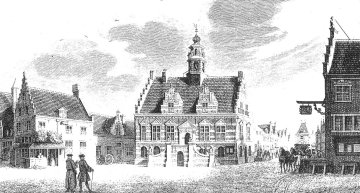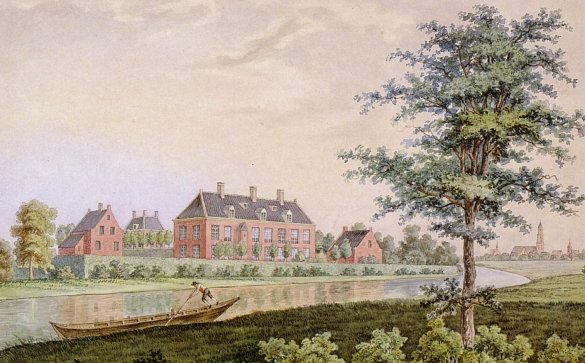|
|
|
|
The Johan Franco branch of the IJsselstein family
Johan Franco I, friend of the Bohemian Brethren |
From Edam via Dordrecht to IJsselsteinAs was mentioned at the end of the previous page, the first Johan Franco Beijen (7.1) was born in 1706 in Edam. When the boy was nearly six years old, his father died. In 1720, when he was fourteen, his mother Mechteld van Meerland married again and she moved with him to Dordrecht.In 1731 Johan Franco married Arnolda Catharina van Esch. The couple settled in IJsselstein, the town of Johan Franco's ancestors. They moved in with his grandfather Franco van Meerland, who was by then 88 years old. Johan Franco assisted him in his financial affairs. Alderman of IJsselstein Franco van Meerland passed away in 1734. Johan Franco was his main heir. This meant that there was no need for him to worry about money for the rest of his life. Franco van Meerland passed away in 1734. Johan Franco was his main heir. This meant that there was no need for him to worry about money for the rest of his life.
Johan Franco held positions in the municipality of IJsselstein, just as his grandfather had done before. For many years, from 1735 to 1748 he was an alderman of IJsselstein. The IJsselstein city hall as it was at that time is depicted on the right. The Bohemian BrethrenFrom 1736 Johan Franco played an important role in the establishment of the Bohemian Brethren in the Netherlands. They were a Protestant community from Bohemia and Moravia (now the Czech Republic) that is now known in English speaking countries as the Moravian Church. In the Netherlands they were known as Hernhutters, because many of the Brethren had lived in the German town of Hernhut before. They were persecuted in various countries.Marie Louise of Hesse-Kassel, Princess consort of Orange, who was the Baroness of IJsselstein at that time, was sympathetic towards the leader of the group, Nikolaus Ludwig Count of Zinzendorf. She agreed to receive in her barony a number of the Brethren who were driven away from Denmark. Johan Franco Beijen sold them a parcel in IJsselstein where they built their settlement that was called 's-Heerendijk. Below is a copy of a watercolor painting of 's-Heerendijk that was made in 1744. 
Despite the support of the Princess the Bohemian Brethren experienced much opposition from the municipal government of IJsselstein that was strongly influenced by the local clergymen. Only one member of the municipal board was on their side: Johan Franco Beijen. He was gradually more and more involved with them, and in 1741 he became a member of the Brethren Congregation, without resigning from the Reformed Church. This led to major conflicts with the church council and the synod. Johan Franco wrote many letters and published some booklets in which he defended the Brethren. In 1750 he was eventually expelled as a member of the church. At the same time he had already resigned himself. Johan Franco gave and loaned the Brethren Congregation considerable sums of money. Nevertheless the settlement in IJsselstein was no success. In 1747 the Brethren moved to Zeist, east of Utrecht, where the Brethren Congregation still is established now. Johan Franco remained in IJsselstein. Johan Franco's familyJohan Franco died in 1752. He and his wife Arnolda Catharina had five children. Only two of them reached the adult age: a daughter and a son.After Johan Franco's decease Arnolda Catharina, who did not like the Brethren very much, tried to get the loans repaid. It succeeded only for a small part. The main character of this page was was the first of a series of six Johan Franco's whose given names were passed on from father to son. On this website they are mentioned as Johan Franco I to VI. As far as we know, they did not use these specifications themselves. The Johan Franco's II to VI are discussed on the next pages. |
|
The next page The homepage |
The overview of the site The top of the page |
Searching this website Comments or questions |